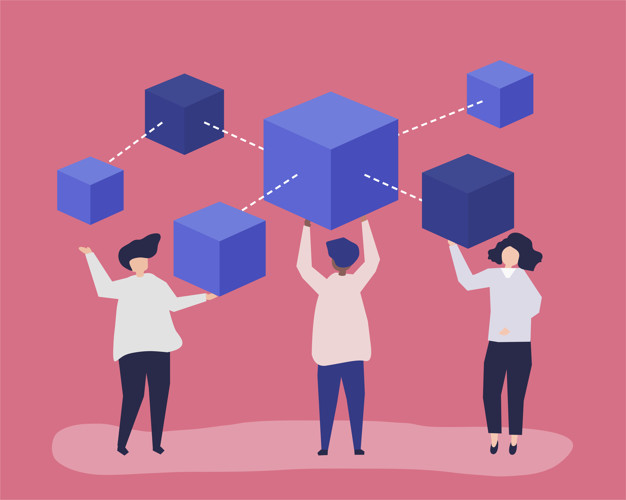AI for driving Personalized Education
3AI August 14, 2018

AI can also be instrumental in enabling continuous improvement for teachers. By tracking their performance across a variety of metrics, schools will be able to better uncover the areas where teachers need support and coaching.
Artificial intelligence is slowly, and steadily, making its way into mainstream education. And not simply as part of educational curricula. We are seeing increasing instances of schools, colleges and other academic institutions leveraging AI as a crucial part of the process in which they deliver education to their students. In the West, numerous examples abound of these educational institutions leaning heavily on AI – from delivering personalized educational curricula to automating routine tasks that classroom teachers have to routinely perform.
Tech luminaries such as Bill Gates are enthused by the idea of Artificially Intelligent Tutoring Systems – which can ensure impactful delivery of course content and improved internalization of that content among students. The education sector in India, currently reeling from endemic problems – from static curricula to dated pedagogical methods – has much to gain through an AI-driven facelift. Let us look at some of the areas where AI can make its way into education and revolutionize the way the next generation of students learns.
Augment Planning of Curricula and Lesson Plans
The present-day paradigm of a teacher delivering pre-designed, standardized content to a classroom of students with diverse aptitudes and interest levels – is remarkably inefficient. We’ve seen the negative impact that the current pedagogical methods have had on the employability levels of the current generation. To this end, by leveraging the variegated applications of artificial intelligence techniques, academia would be able to deliver more personalized curricula and lesson plans, improve students’ understanding and retention of the coursework and in turn improve educational outcomes. Here are a few examples of how we could enable those:
By infusing AI into the skills assessment and aptitude assessment process for students, schools and universities will be able to better judge both – the current level of understanding among students for a specific subject area and where their innate inclinations lie. Often, students are unclear or unsure about where they see their career graph moving and what they would like to do in the future. Through AI, schools and universities can map out the data of previous students and their career achievements and tie that back to educational research. This way, schools, and universities may be able to accurately predict which subjects a student has a natural inclination towards and then coach them for a career in that direction.
Going in the same vein, AI can also use data around student attention, interest, aptitude, and ability to recommend customized coursework. This will help build the capability of students towards a specific career path and bring better value to the time of students. This AI-centric approach would help foster more personalized training pathways and enable students with the skills they need to succeed in their future professions, rather than burdening our students and staggering their confidence as done by the current system.
Furthermore, AI can also be instrumental in enabling continuous improvement for teachers. By tracking their performance across a variety of metrics, schools will be able to better uncover the areas where teachers need support and coaching. AI can also help curate the coursework for teacher improvement, thus making sure that teachers are continuously updated and continuously refine their craft
Automating Routine, Low-Value Tasks
Teachers today are overburdened by all manner of menial, low-value tasks that neither improve student experience nor deliver better learning outcomes. Enormous time is spent by our teachers worrying about and performing hygiene activities – from taking the attendance of the class, evaluating and grading tests and assignment and performing peer reviews. We can unlock this time spent by teachers and help them focus on what they do best – teaching and coaching for success. By incorporating AI into the core way-of-working of schools today, we can eliminate these burdensome tasks in the following ways:
By automatically curating tests for students based on the aptitude of students in the classroom. Rather than relying on teachers to conjure up questions in the classroom, AI could help understand the learning level of students and fire up the questions. By using a gradational question bank, teachers would be able to administer tests much more easily.
The other related time-consuming area for teachers tends to be grading the administered tests and assignments. These tasks can much easily be eliminated by using the AI administered tests. AI can help automate the repetitive task of grading tests, thus helping teachers focus more on coaching, solving questions from students and helping create a better platform for learning. AI-graded tests can also help surface patterns of errors (i.e. are students mainly making the same mistakes?), thus providing input to teachers on which areas of training require more impetus in the next class.
Among other several administrative tasks – teachers also spend hours over the year taking attendance, peer reviewing the efficacy of the other teachers and submitting periodic reviews to their supervisors and coordinators. This workload can also be supported by artificial intelligence – by maintaining automated attendance logs, summarizing the test scores of students and reporting the performance of teachers.
Optimizing the Classroom Experience
AI in education can go well beyond simply personalizing course content and unburdening teachers. To fully inform and unleash the creativity and expertise of teachers, we also need to imbue AI-led applications in the classroom on a day-to-day basis so that teachers can work at full-throttle. Time spent on minding students and reorienting classroom methods to ensure better student engagement can be saved by using AI in the following ways:
AI can help improve the tracking of students’ attention levels and help teachers intervene before students lose interest in the classroom content. While teachers are conversant in minding students that actively disrupt the classroom, engaging students who are quietly inattentive is a comparatively difficult task. Using attention trackers, teachers can much easily monitor the attentiveness of the class and mind them before they tune out.
Finally, by aggregating the attention scores of a particular classroom, AI can help teachers devise a more potent mix of teaching, testing, and activities – to continuously ensure better class performance and engagement
Using AI to augment classroom and educational institutions is of interest to everyone – students, teachers, and parents – and can help bolster educational outcomes. By personalizing the curriculum, optimizing the time of teachers and effective in-class monitoring and assistance, AI can be a game-changer in the way coursework is consumed and leveraged by the next generation of students.






